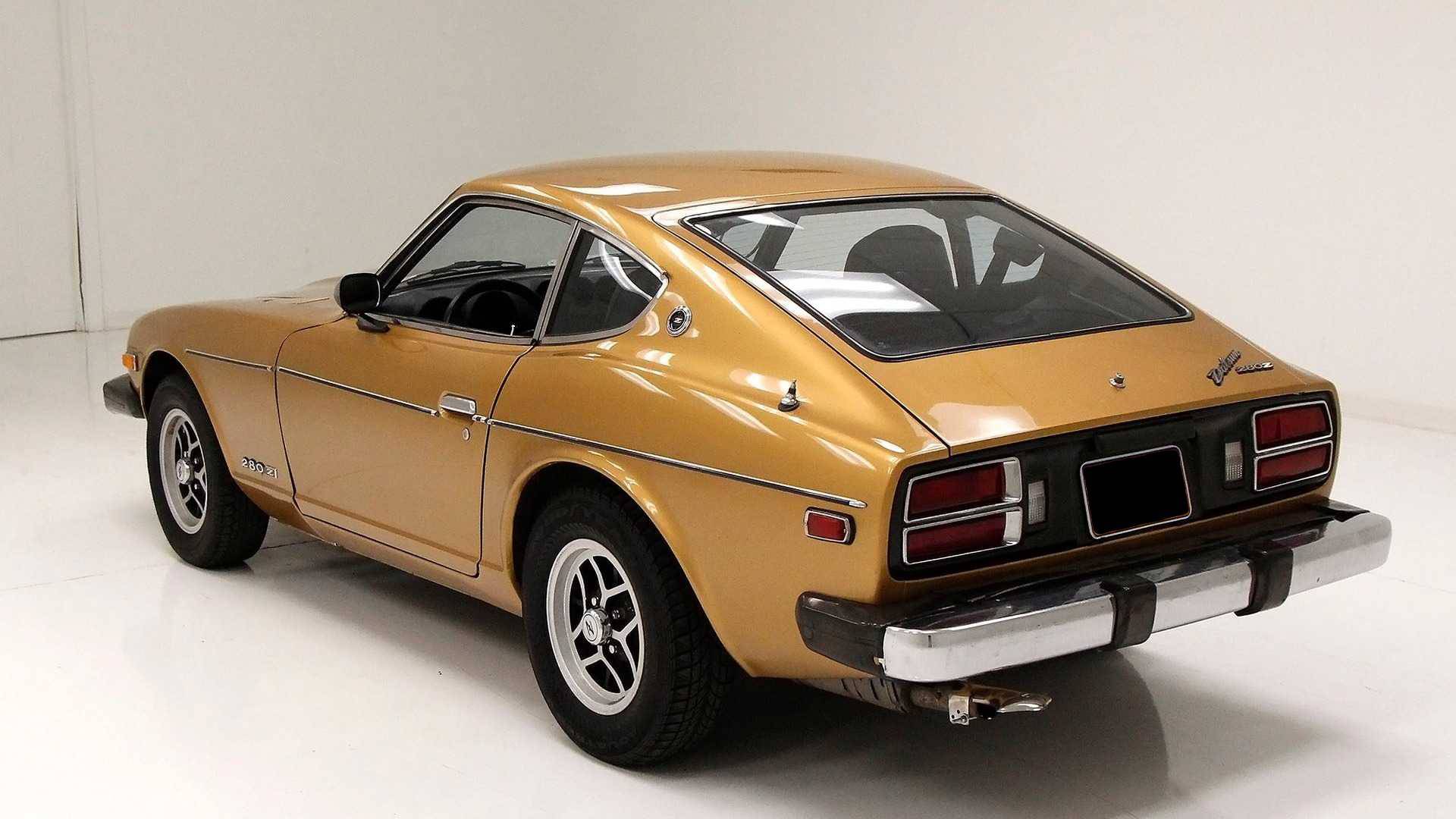Datsun 280 Z

Datsun 280 Z

The Nissan S30 (sold in Japan as the Nissan Fairlady Z and in other markets as the Datsun 240Z, then later as the 260Z and 280Z) is the first generation of Z GT 3-door two-seat coupés, produced by Nissan Motors, Ltd. of Japan from 1969 until 1978. One of the most successful sports car lines ever produced, the trend-setting S30 was conceived of by Yutaka Katayama, the President of Nissan Motor Corporation U.S.A. and designed by a team led by Yoshihiko Matsuo, the head of Nissan’s Sports Car Styling Studio.[1]
Seeking to compete head-to-head with established European sports cars, Datsun priced the new 240Z within $200 of the British MGB-GT in the United States, a five-year-old design that showed its age. The 240Z’s sleek styling, modern engineering, relatively low price, and impressive performance struck a major chord with the public. Positive response from both buyers and the motoring press was immediate, and dealers soon had long waiting lists for the “Z”.
As a “halo” car, the 240Z broadened the acceptance of Japanese car-makers beyond their econobox image. Datsun’s growing dealer network—compared to limited production imported sports cars manufactured by Jaguar, BMW, Porsche, Alfa Romeo, and Fiat—ensured both easy purchase and ready maintenance.
All variants of the S30 have four-wheel independent suspension consisting of MacPherson struts in front (borrowed from the Nissan Laurel C30) and Chapman struts in back. Front disc brakes and rear drums were standard.
The 240Z used twin SU-style Hitachi one-barrel side-draft carburetors. These were replaced on the 260Z with Hitachi one-barrel side-draft carburetors beginning with model year 1973 to comply with emissions regulations, resulting in diminished overall performance. A Bosch-designed L-Jetronic electronic fuel injection was added to US market 280Zs in 1975 to compensate.
Continuing through the 1975–1978 model years, markets outside of the United States (and Japan, which only offered the 2-liter engine from 1974) still received the 260Z coupé and 2+2. The S30 240Z is unrelated to the later 240SX, which is sold as the Silvia in Japan.

Engine Technical Data
| Engine type – Number of cylinders : | Inline 6 |
| Engine Code : | L28E |
| Fuel type : | Petrol |
| Fuel System : | Bosch L-Jetronic fuel injection |
| Coolant : | Water |
| Engine Alignment : | Longitudinal |
| Engine size – Displacement – Engine capacity : | 2753 cm3 or 168 cu-in |
| Bore x Stroke : | 86.1 x 79.00 mm 3.39 x 3.11 inches |
| Number of valves : | 12 Valves |
| Aspiration : | N/A |
| Compression Ratio : | 8.30 |
| Maximum power – Output – Horsepower : | 173 PS or 171 bhp or 127 kW @ 5600 rpm |
| Maximum torque : | 221 Nm or 163 lb.ft @ 4400 rpm |
| Drive wheels – Traction – Drivetrain : | RWD |
| Transmission Gearbox – Number of speeds : |
5 speed Manual
|
| Body : | Coupé | ||
| Num. of Doors : | 3 | ||
| Wheelbase : | 230.4 cm or 90.71 inches | ||
| Length : | 439.9 cm or 173.19 inches | ||
| Width : | 163.1 cm or 64.21 inches | ||
| Height : | 128.3 cm or 50.51 inches | ||
| Front Axle : | 139.5 cm or 54.92 inches | ||
| Rear Axle : | 139 cm or 54.72 inches | ||
| Aerodynamic drag coefficient – Cx : | – | ||
| Front Brakes – Disc dimensions : | Discs (- mm) | ||
| Rear Brakes – Dics dimensions : | Discs (- mm) | ||
| Front Tyres – Rims dimensions : | -/- R- | ||
| Rear Tyres – Rims dimensions : | -/- R- | ||
| Curb Weight : | 1304 kg OR 2875 lbs | ||
| Weight-Power Output Ratio : | 7.5 kg/hp | ||
| Trunk / Boot capacity : | – L | ||
| Steering : | Recirculating ball. PAS – | ||
| Front Suspension : | Independent with MacPherson struts, lower wishbones, coil springs, telescopic dampers, anti-roll bar | ||
| Rear Suspension : | Independent with Chapman struts, lower wishbones, coil springs, telescopic dampers | ||
| Fuel Consumption – Economy – Combined: | 10.9 L/100km 26 mpg UK / 22 mpg US |
| CO2 emissions : | 260 g/Km (estimate) |
| Top Speed : | 205 km/h or 127 Mph |
| Acceleration 0 to 60 mph (0 to 96 Km/h) : | 8.0 s |
| Acceleration 0 to 100 km/h (0 to 62 mph) : | 10 s |





Opening times
Monday - Thursday: 09.00-21.00
Museum & Hotel
info@doubleredcars.eu +421 910-446-447
Restaurant and food ordering
redhorse@doubleredcars.eu +421 911-700-010
© 2024 Double Red Cars Museum. All rights reserved. | Privacy policy


